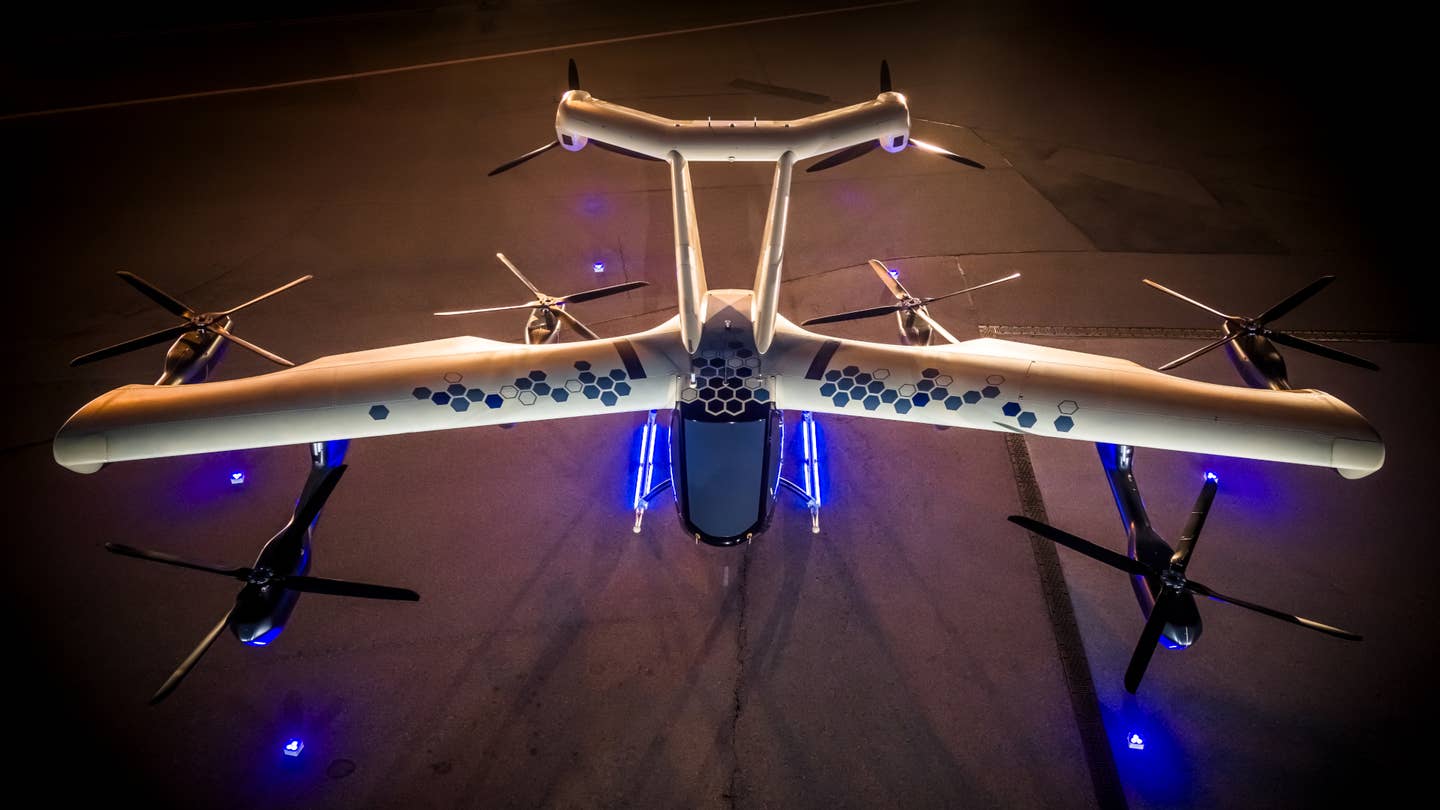Take a Look at Airbus’ Newly Unveiled Electric Air Taxi
The manufacturer releases new photos and video of the CityAirbus NextGen, a four-seat eVTOL design for passenger transport, medical services, ecotourism, and more.

Airbus’ all-electric CityAirbus NextGen is built for a pilot to fly up to three passengers as far as 50 sm (43 nm), cruising at 75 mph (65 knots). [Courtesy: Christian Keller/Airbus Helicopters]
No manufacturer secured more aircraft orders in 2023 than Airbus. But the company is always looking to expand its portfolio.
Airbus on Thursday unveiled the full prototype of its four-seat CityAirbus NextGen to the public. The electric vertical takeoff and landing (eVTOL) design makes its debut ahead of its anticipated maiden voyage later this year.
CityAirbus NextGen is a zero-emission, lift-plus-cruise design for a variety of missions in major cities and urban environments, including passenger transport, medical services, and ecotourism. Airbus will partner with operators and airlines to fly the model worldwide.
At first, the eVTOL will be flown by a pilot. But it’s equipped with an operational automated flight mode that could enable autonomous operations in the future.
“Rolling out CityAirbus NextGen for the very first time is an important and very real step that we are taking towards advanced air mobility [AAM] and our future product and market,” said Balkiz Sarihan, head of urban air mobility (UAM) at Airbus.
Airbus revealed the NextGen concept—a descendant of its CityAirbus demonstrator—in 2021. The aircraft is designed for a pilot to fly up to three passengers, with a range of about 50 sm (43 nm) and cruise speed of 75 mph (65 knots). It weighs approximately two tons and has about a 40-foot wingspan.
The NextGen design includes a V-shaped tail, fixed wings, and distributed electric propulsion system, with eight electric propellers and 16 electrical power units. Airbus in 2021 said these features will keep sound levels below 65 dBA during fly-over and below 70 dBA during landing.
The aircraft was built using a mix of in-house and externally supplied components, such as wings from Spirit AeroSystems, flight controls from Thales and Diehl Aerospace, and electric motors from MagicAll.
CityAirbus NextGen will include a human machine interface, with a single piloting stick controlling all aircraft axes and replacing cyclic, pedal, and collective controls. Airbus claims the design is a first in the helicopter industry. Using the stick, a pilot will be able to perform takeoff and landing, climb, descent, acceleration, deceleration, turn, and approach.
Airbus will certify the air taxi in the enhanced category under the European Union Aviation Safety Agency’s (EASA) Special Condition for VTOL (SC-VTOL) regulations. The manufacturer describes these as “the most stringent certification requirements.” FAA certification is expected to follow in the months and years beyond.
The unveiling of the NextGen prototype took place as Airbus opened its CityAirbus test center in Donauwörth, Germany, a site dedicated to eVTOL aircraft development. Donauwörth will host remaining tests of the aircraft’s electric motors, rotors, and other systems such as flight controls and avionics, required before it makes its maiden flight. Airbus began operations at the facility in December after powering on the first NextGen model.
Airbus intends to fly the air taxi in countries such as Italy, Germany, Norway, and Japan, as well as regions such as Latin America. But it will need to establish operational partners and infrastructure such as electric aircraft chargers prior to a rollout.
Recently, the manufacturer expanded its partnership for service in Italy—which already included ITA Airways, nation’s flag carrier—to include vertiport operator UrbanV and green energy firm Enel, which will help airports transition to electric infrastructure.
It also intends to collaborate with international helicopter and fixed-wing lessor LCI to develop business models and partnership scenarios revolving around AAM strategy, commercialization, and financing.
Like this story? We think you'll also like the Future of FLYING newsletter sent every Thursday afternoon. Sign up now.

Subscribe to Our Newsletter
Get the latest FLYING stories delivered directly to your inbox






